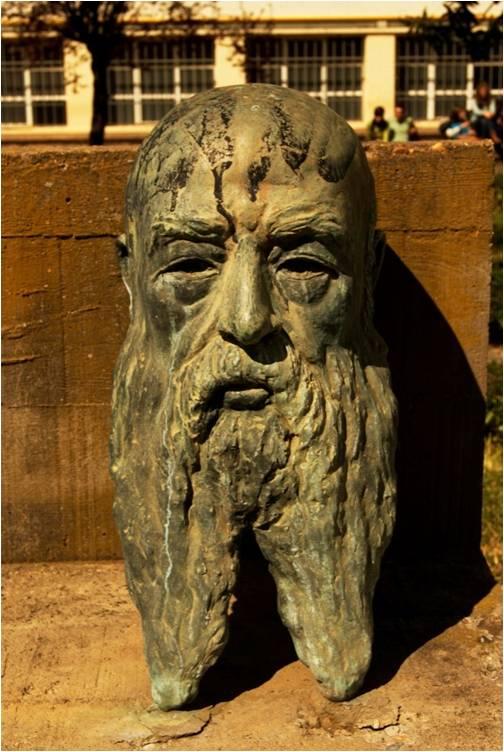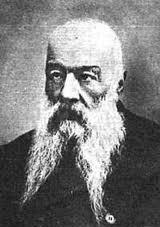
The Faculty of Medicine in Seville is one of the oldest in Spain, having its beginnings in the 16th century - 1508 - according to the bull granted by Pope Julius II. After several centuries of existence without major setbacks, the beginning of the 19th century was inaugurated with an unexpected shock - the total eradication of medical studies throughout the nation - although on this first occasion Seville was one of the few fortunate cities, as the following year, by express Royal decision of Charles IV, medical teaching was once again authorised. Unfortunately, this improvised and ephemeral surprise at the beginning of the century was only a mirage that gave way to a succession of events that would end up taking medical studies away from the Andalusian capital in 1843 and moving them two years later - 1845 - to the neighbouring city of Cadiz. In its place, a college of "practitioners in the art of healing" was created, which disappeared in the same year, 1845.
With the transfer of medical studies to Cadiz, a long parenthesis of 25 years without medical education in the Sevillian metropolis was opened, which would not end until the doctor from Cadiz who settled in the city of Seville -Federico Rubio y Galí (1827-1902)- under the protection of the freedom of education of the 1868 revolution, founded the Free School of Medicine and Surgery of Seville, the true origin of our current Faculty of Medicine. With Federico Rubio, not only was medical education in the city being revived, but also scientific modernity with the creation of a pioneering institution that would have a definitive impact on the training of medical professionals in the capital. Rubio was the inspirer of the founding Decree and the architect of the first decisions on the organisation and operation of the School and the creator of the innovative syllabus with which it began. It incorporated the incipient medical specialisation into the teaching, a model implemented in some European countries and which was not established in the official medical teaching of the rest of the Spanish universities until the reform of 1902. In this sense, as early as 1868, three medical specialities were introduced in Seville as teaching subjects: ophthalmology, dermatology and venereal diseases and their respective clinics. It was also the first institution in Spain to introduce histology and systematic experimentation as a compulsory subject in the teaching of basic sciences, an example of which was the construction of the physiology cabinet in imitation of Carl Ludwig's in Leipzig (Germany).
The Medical School was supported by the various local institutions in Seville, the City Council, the Provincial Council and the University itself, which collaborated in its support. The City Council offered a monthly endowment to subsidise the theoretical classes, the University gave them the premises to teach them and the material for their laboratories, and the Provincial Council offered them the Hospital de las Cinco Llagas (current seat of the Andalusian Parliament) for the anatomy practical’s and the clinical teaching of the rest of the subjects. In this way, the anatomy and clinical departments were established within the Central Hospital, apart from the theoretical classes that were taught in the classrooms of the University.
But of all the institutions, it was the Provincial Council that became not only the main financier but also the protector of the establishment. In 1870, the building of the former convent of Madre de Dios was ceded to it, moving the theoretical teaching to the new facilities.
A new political change in 1875 - the fall of the First Republic and the Bourbon Restoration - led to the closure of many of the free teaching centres and their conversion into public institutions, including the Seville Free School of Medicine. After several negotiations with the government, state authorisation was obtained for it to remain, although it had to modify its innovative curriculum and adapt it to the rest of the country. The Royal Order of 1875 authorised the Provincial Council to continue to be responsible for the financial management of medical studies, but the School lost its characteristics as a private centre and was transformed into a public institution, once again allowing the Medical Degree to continue in the city. Thus, was born the "ESCUELA PROVINCIAL DE MEDICINA DE SEVILLA" (Royal Order of 14 September 1875).

These new legal provisions led to the loss of the regulated teaching of medical specialities, although from that moment onwards a process was initiated to try to recover it. In this sense, in 1878 an advanced and totally altruistic centre was opened, the CLINICA DE ESPECIALIDADES MÉDICAS or POLICLÍNICA, linked to the School and conceived with a dual purpose: teaching to provide complementary practical knowledge in the field of specialities to the students and assistance to facilitate medical care for the "poor and needy" of the city. Once again, the centre became a pioneering institution, as the POLICLÍNICA was a completely new establishment in our country and followed the model implemented in other European countries, mainly Germany.
From 1875 until the 1990s, the School enjoyed a period of calm and personal and institutional improvement, as demonstrated by the participation of the Centre and its professors in different national and international scientific activities, as well as increasing its material and improving its facilities year after year, achieving the highest accolades from prestigious professionals.
After more than thirty years of existence and when everything pointed to a definitive consolidation of the school, at the dawn of the 20th century, another legislative change (1901) again shook the institution and endangered the continuity of the studies for the fourth time. On this occasion, the possible change provoked an impressive mobilisation of all the political, economic and social forces of Seville, which succeeded in obtaining from the Ministry the authorisation for its support by the Provincial Council, although integrating it into the University by granting it the status of PROVINCIAL FACULTY, a position it would maintain until 1917, when the Medicine-Department relationship would disappear and it would begin to form a definitive part of the UNIVERSITY OF SEVILLE.
The history of our Faculty is the story of a continuous struggle against adversity, whether political, economic or legislative, although fortunately for all with a happy ending. History is capable of showing how illusions can become more powerful than all the difficulties, an example being the Faculty of Medicine of Seville, which can be considered as a model of permanent overcoming.
Dña. Encarnación Bernal-Borrego
Profesora Titular de Historia de la Ciencia
Unidad de Historia de la Medicina y Documentación Científica
Departamento de Psiquiatría. Facultad de Medicina




